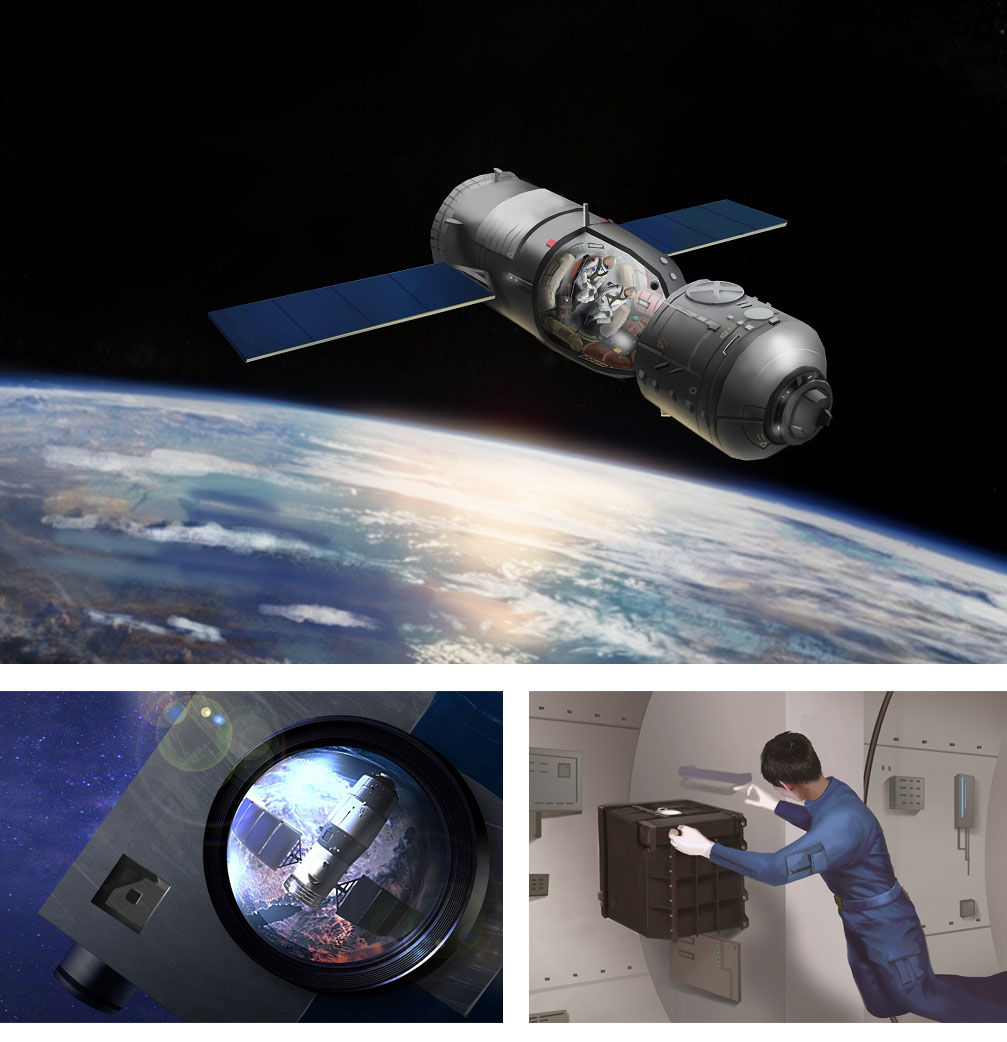


China’s Tiangong-II Space Laboratory is launched from Jiuquan Satellite Launch Center in Northwest China, September 15, 2016.
Tiangong-II Space Laboratory was launched from Jiuquan Satellite Launch Center at 22:04 on September 15, 2016, and will serve in orbit for more than two years.
The laboratory has scientific research, utilization and technology testing as primary goals, and is equipped with the most sophisticated utilization system of China Manned Space Program.
Tiangong-II accommodates 51 scientific instruments to conduct more than 10 projects in-orbit in a wide range of disciplines, including fundamental physics, astronomy, life science, and space materials sciences. The first space cold atomic clock in the world increases the autonomous punctual accuracy of spacecraft by two orders of magnitude. The lab will study Gamma-ray burst polarimetry, in cooperation with the European Space Agency, making breakthrough discoveries in the nature of gamma-ray bursts and insights into the origin and evolution of the universe. Space life science experiments will study the laws of higher plant growth and development in the space environment, aiming at understanding the regulation mechanisms and rules of photoperiod induced flowering. Quantum key distribution experimentation will consolidate China’s leading position in advanced quantum manipulation science.
In addition, a number of scientific and utilization projects in multi-angle polarization and wide band spectral imaging, multiband limb UV spectral imaging, interferometric imaging radar altimetry, precise orbit determination, thermocapillary convection, multiple materials experimentation, space environment monitoring and concomitant satellite testing, will be carried out in Tiangong-II. Astronauts will take part in two projects after arriving at Tiangong-II via the Shenzhou-XI manned spaceship.
The research in Tiangong-II will explore the frontier of science and technology. The experience and knowledge gained will provide solutions for man-tending space utilization of a certain scale on a short-term basis, and will offer key guidance for the space utilization in Chinese Space Station, which will be built in the near future.
Source: Technology and Engineering Center for Space Utilization,
Chinese Academy of Sciences